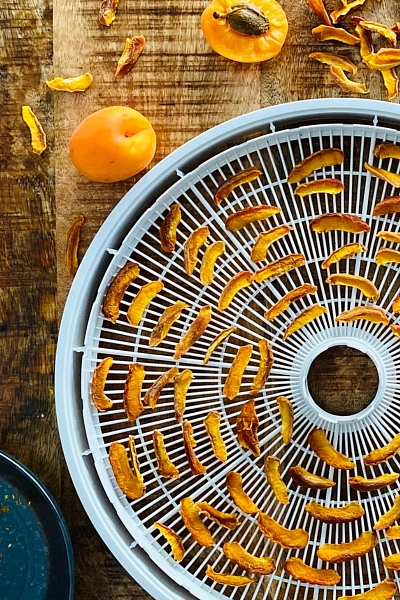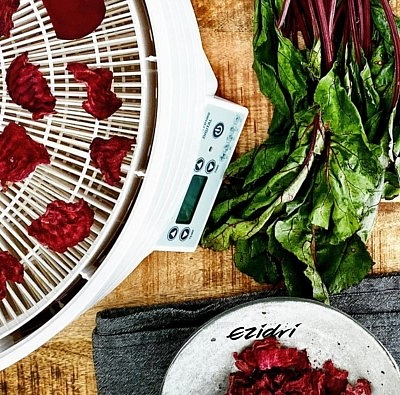FRUITS

Popular products of drying has long been more than just apple schnits. Basically, any fruit can be dried, whether it is apricots, peaches, pears, pineapple, watermelon, or even small fruits like raspberries, strawberries, currants or blueberries. Fruit as such can be dried without any treatment, or it can also be dried in a liquid state into the form of fruit rolls. Dried fruit is intended for direct consumption as a healthy treat that contains good, i.e. natural sugars.
Dried fruit can be stored for later use throughout the year in the form of:
- tea blends
- fruit rolls
- fruit chips
- base for muesli and granola
- raw ingredients for baking and decorating
- fruit treats and snacks for children
Fruit/vegetable rolls and larger pieces of fruit are dried at a temperature of 55-60 °C. Well dried fruit is supple and flexible without wet spots. It contains less than 5 % water.
TIPS
Allow a slice of dried fruit to cool, cut it open and squeeze.
There should be no traces of moisture in the cut.When drying fruit puree for rolls, coat your solid sheet with a drop of vegetable oil.
The roll will come off easily.Never pour your puree directly over the dryer. Instead, set your tray next to the dryer, place a solid sheet on it and pour your puree. Carefully place the tray on the dryer.
This way you can prevent spilling the contents into the dryer’s vent or engine.When drying thin slices of fruit or small fruits, use a fine mesh sheet. The slices come off easily without getting stuck.
And the small balls of fruit do not fall through the tray.VEGETABLES

You can dry your veggies the same way as your fruits.
Dried vegetables do not lose any of their nutritional value. You can use it for:
- vegetable seasoning
- root veggie base for soup
- veggie chips
- dried vegetables (tomatoes) pickled in oil
